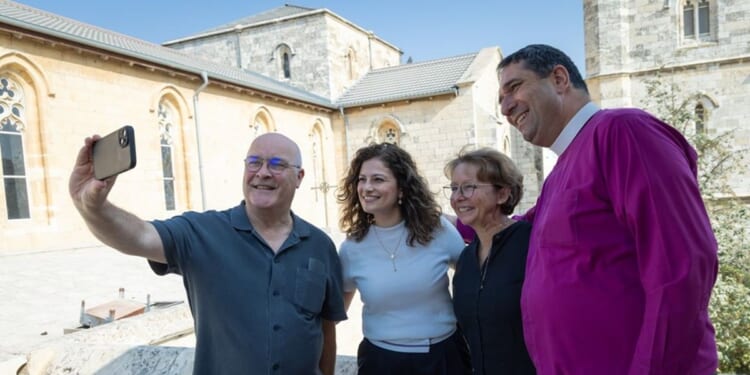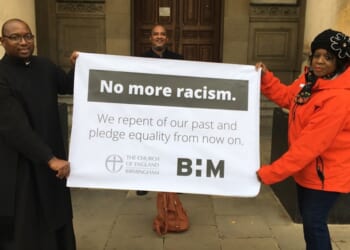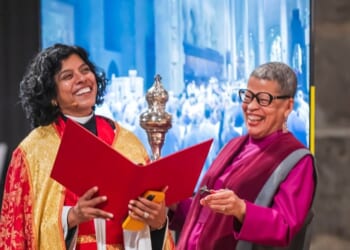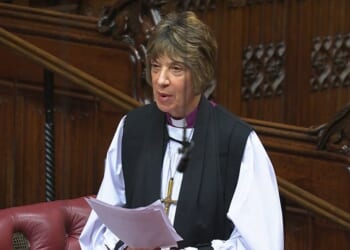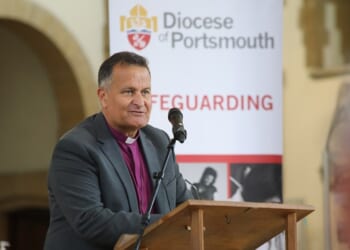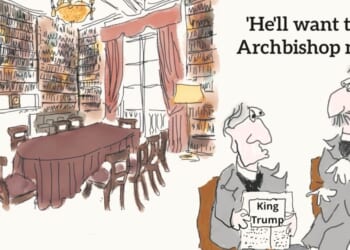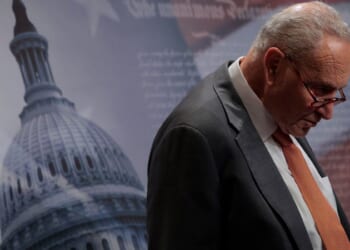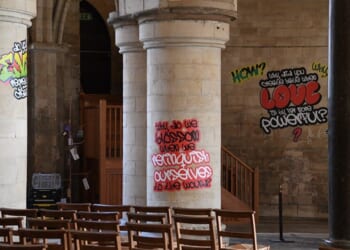CHRISTIANS in Palestine are both nourished and empowered by visits to the Holy Land, the Archbishop in Jerusalem, the Most Revd Hosam Naoum, said on the final day of the Archbishop of York’s pilgrimage.
“Our people here are encouraged, they are sustained, and at the same time they have the opportunity to offer their own message to those pilgrims who come to visit. They feel that they are heard, that people are listening to their stories,” Archbishop Naoum told the Church Times.
For pilgrims, the stories that they heard became “embodied and incarnate”, he said, and ceased to be merely a “fairy tale” of suffering which they had heard about, but not witnessed up close.
There was a temptation to “romanticise” the hardships suffered by Palestinians, he suggested, but visiting exposed the reality: that “people’s lives are at stake here.”
The disruption to daily life caused by the hundreds of permanent checkpoints in the occupied West Bank, the imposition of random road blockades, the possibility of detention without trial, land theft, and harassment and violence perpetuated by armed settlers are all aspects of the daily reality of life in Palestine.
Archbishop Cottrell experienced a small taste of this while in the South Hebron Hills, being followed around, and at one point blocked in, by armed settlers, and later ordered to leave a Palestinian village by Israeli police on the pretext that the area had been closed by the military (News, 8 November).
Archbishop Naoum was quick to reassure would-be visitors that such encounters were not the norm, and occur in places where the average pilgrim need not tread.
“To experience what people themselves experience, that demands a bit of courage, and, of course, taking the right guides with you,” he said. “An average pilgrim wouldn’t necessarily be going to these places.”
Initiatives that drew more intrepid foreign volunteers, such as helping with the olive harvest on Palestinian-owned land to deter settler attacks and crop thefts, were undoubtedly valuable, Archbishop Naoum said, but “We don’t ask people to come and do it.” Visitors had to be convinced that they had the resilience and courage for such activities, he said; and there was great value in simply “seeing the holy sites, and worshipping with the indigenous Christians”.
INTERVIEWED while walking through the Old City, Archbishop Naoum continually stopped to greet shopkeepers and other Jerusalemites. It was clear how deep the Haifa-born, Galilee-bred Archbishop’s roots are in this land.
For him, there is no question that he will remain, even as there are increasing concerns about an exodus of Palestinian Christians from their homeland because of the hardship that occupation imposes on everyday life.
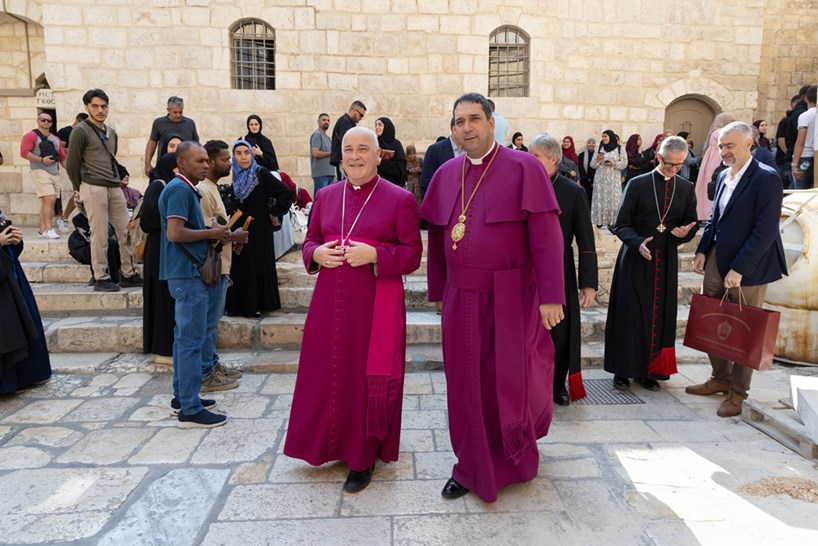 The Archbishop of York and the Archbishop in Jerusalem at the Church of the Holy Sepulchre
The Archbishop of York and the Archbishop in Jerusalem at the Church of the Holy Sepulchre
In Ramallah, Archbishop Cottrell heard from the city’s mayor, Issa Kassis. Mr Kassis said that the city used to be predominantly Christian, and remained an inclusive city, but many Christians were moving away.
The occupation “exhausts us”, he said. Well-educated young people, in particular, found it “very difficult to tolerate” the restrictions on their movement, and the dearth of career opportunities.
The everyday challenges of life in the occupied West Bank were articulated by Fr Remon Haddad, RC priest in the town of Aboud, approximately 20 miles from Ramallah. The drive between the two places should not be a long one, but, when the checkpoint is closed, Fr Haddad has to make a huge diversion. The checkpoint has been closed now for ten months, and there is no telling when, or if, it will reopen.
But the reasons to stay outweighed these undeniable hardships, Fr Haddad said. “We need to stay here, because this is the land of Jesus, and this is the land where our grandfathers and grandmothers were born and died.”
Archbishop Naoum is just as resolute. The extinction of the Church in the Holy Land was the “worst nightmare” of Palestinian Christians, Dr Naoum said, but he was confident that it would not come to pass. “Me and my children will always be here. We will always keep the message of Christ alive in this place.”
The ministry of Christians in the Holy Land, across all the denominations, was carried out “on behalf of the whole world, the whole body of Christ”, he said, and was fortified by visits of solidarity, such as Archbishop Cottrell’s.
He was there “not only to listen, but to walk with people, to be there in the places where they are aching most”, Archbishop Naoum said. “Our resilience does not come from our own strength. . . It’s about being healed and recovering when other people come to stand with us.”
Appreciation of the Archbishop of York’s visit was expressed wherever he went. In Nazareth, the Rector of St John’s, Haifa, Canon Hatem Shehadeh, articulated to Archbishop Cottrell what his visit meant to local Christians, and the message that, they hoped, he would carry home. “It gives us reassurance that we are not alone,” he said. “And tell your people: there are still people here witnessing to the land.”

